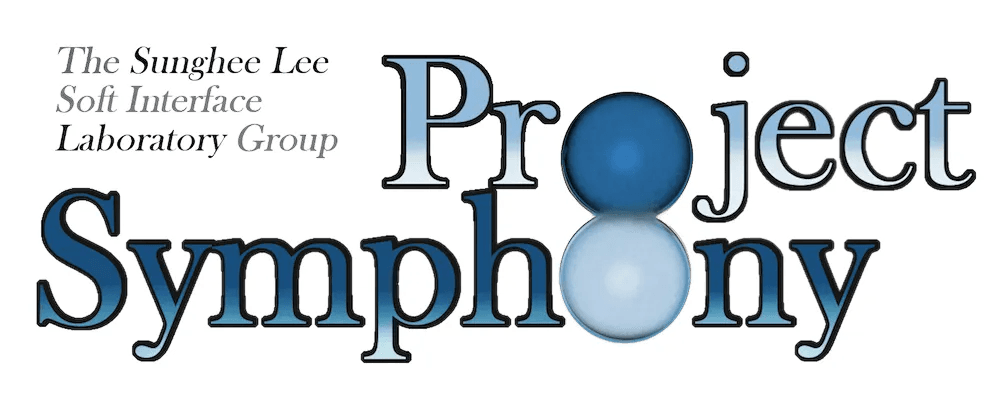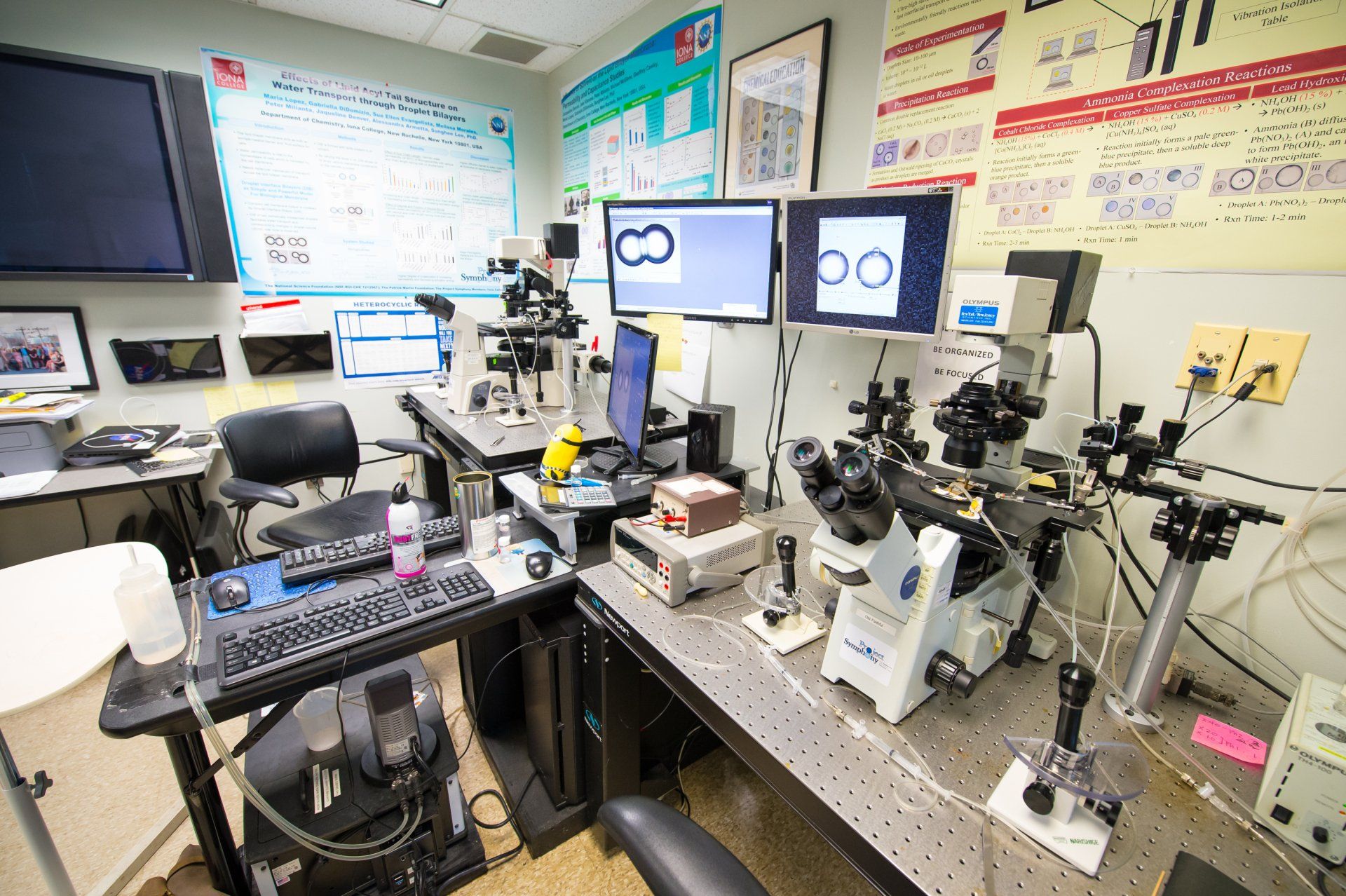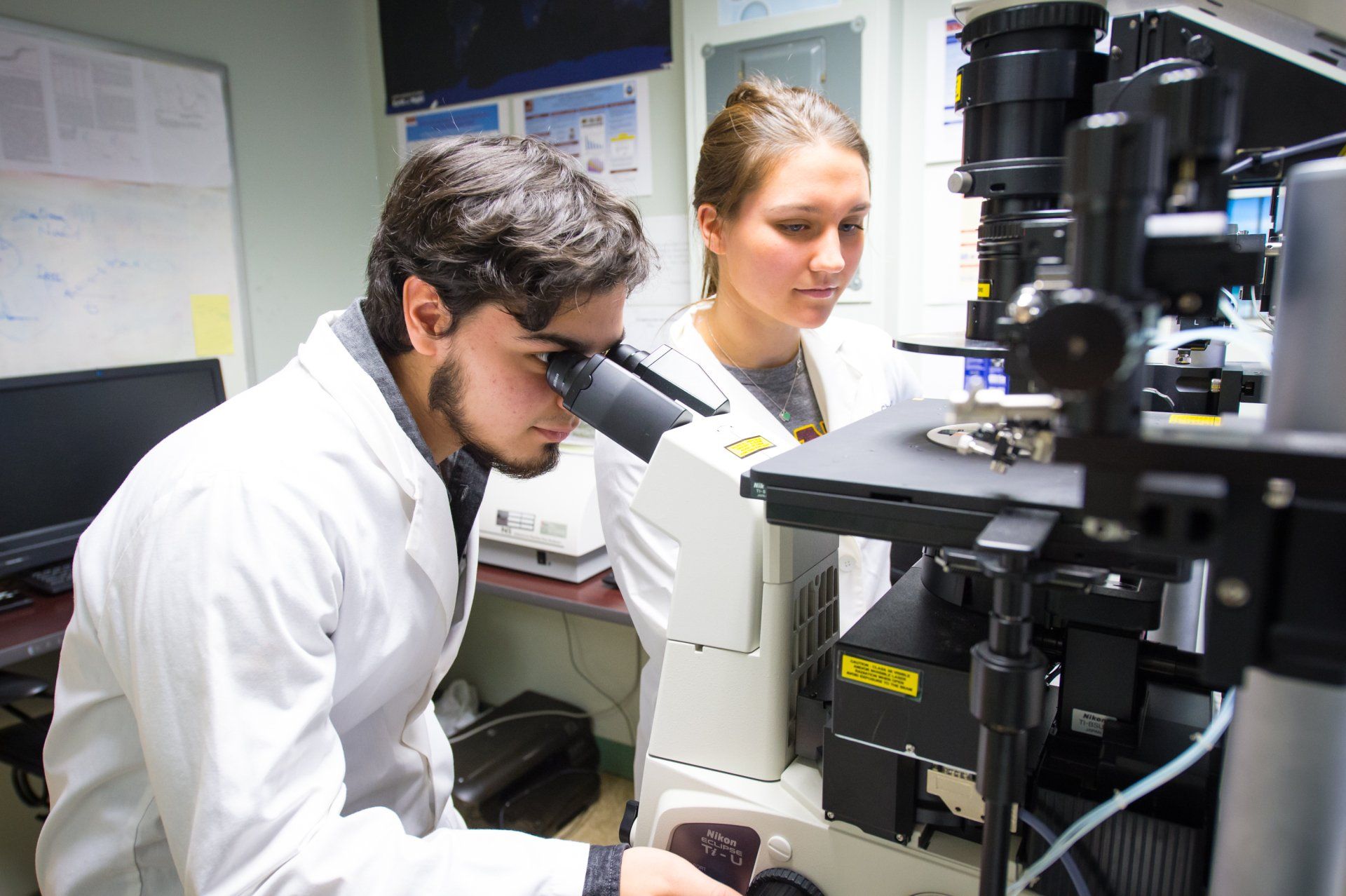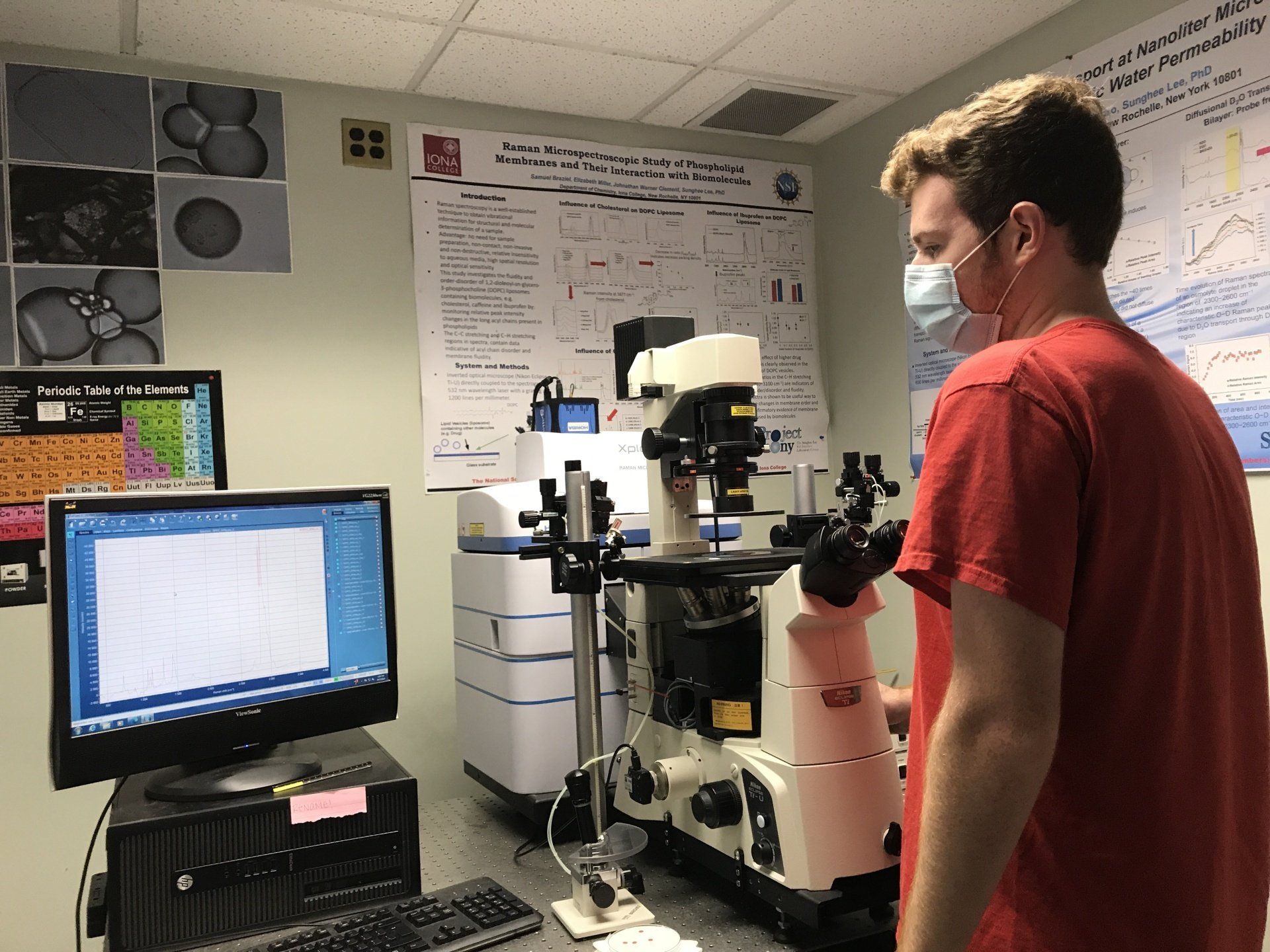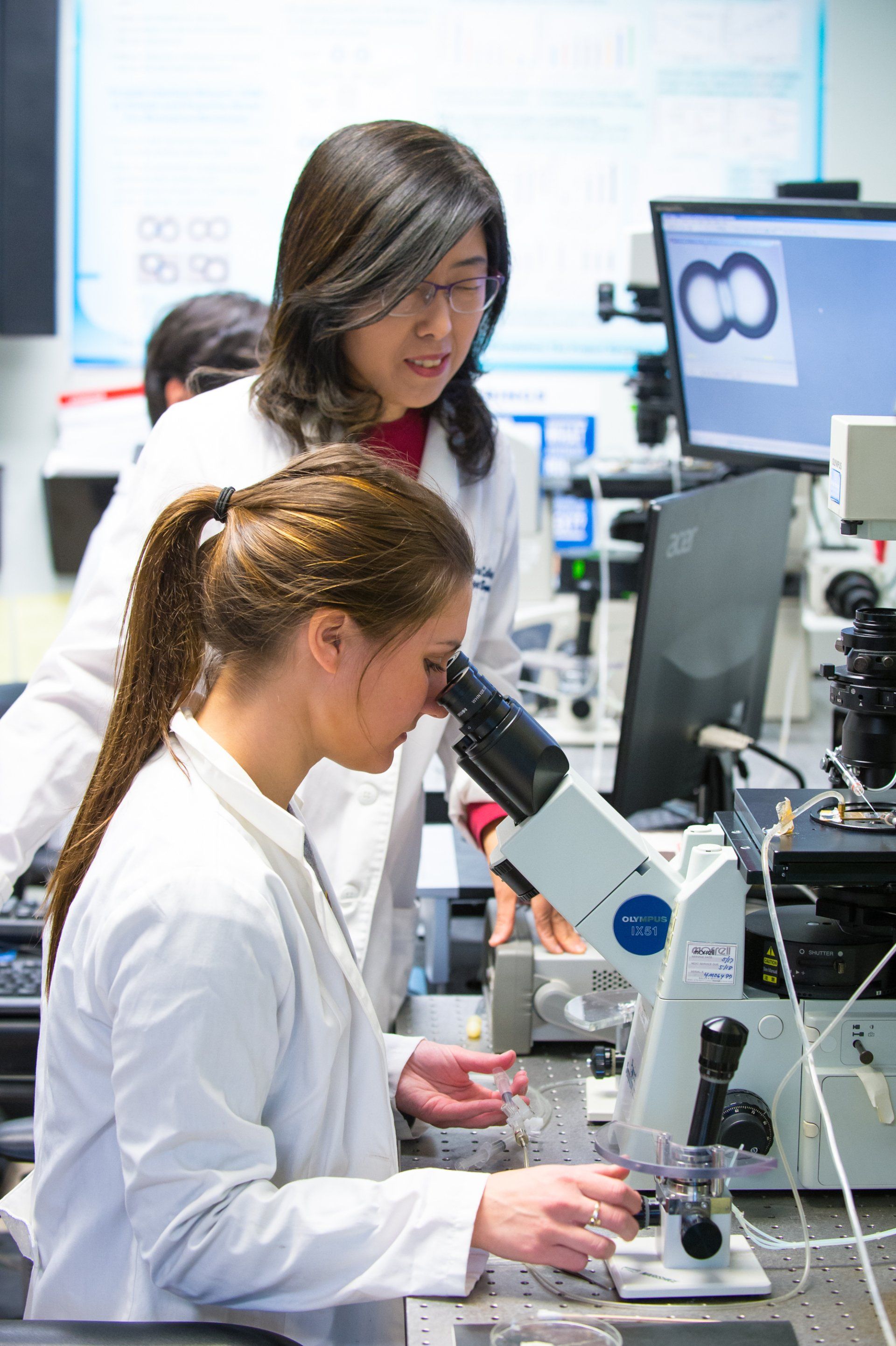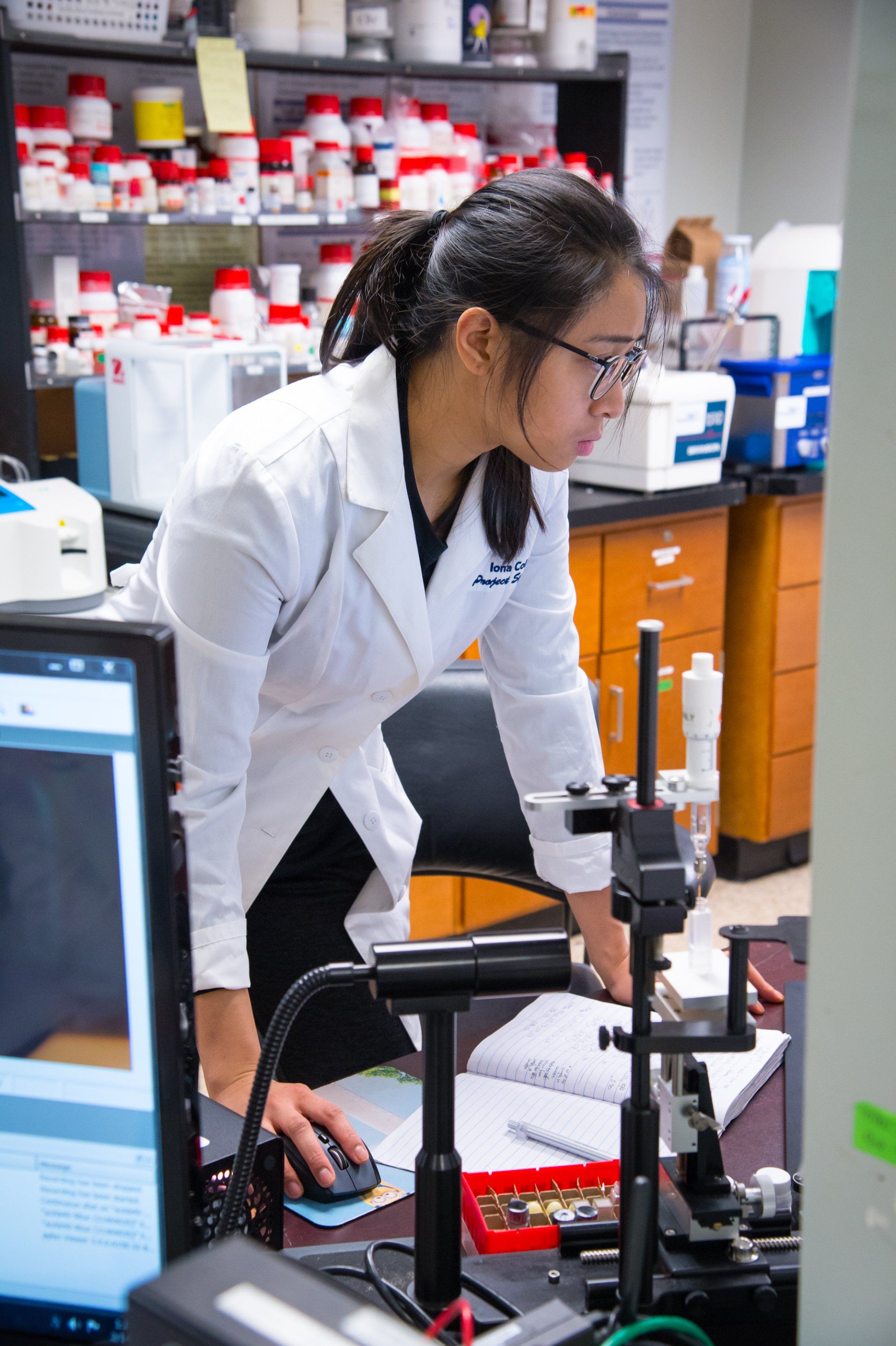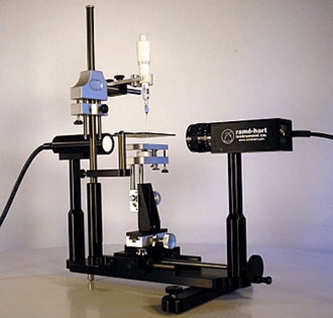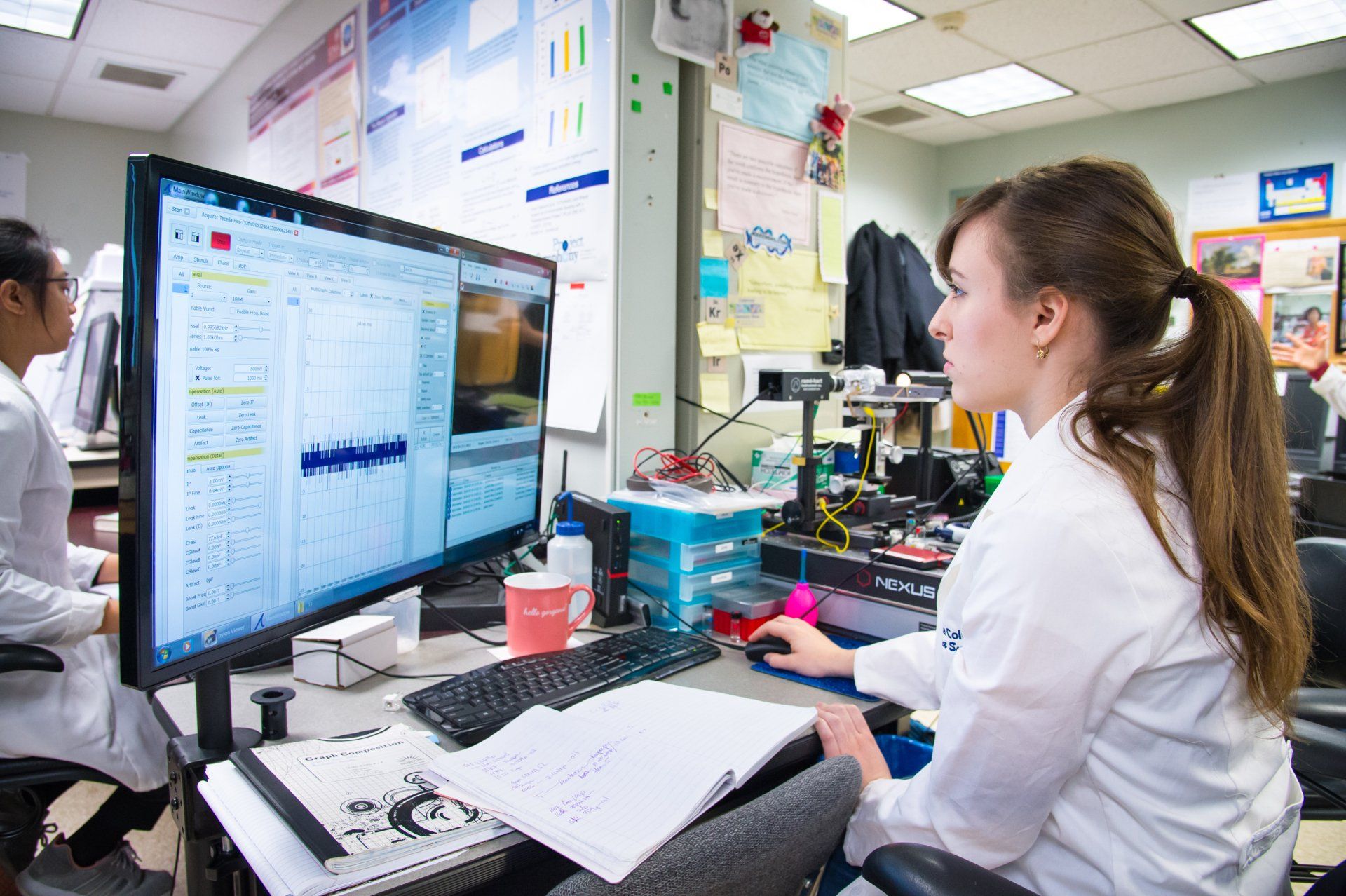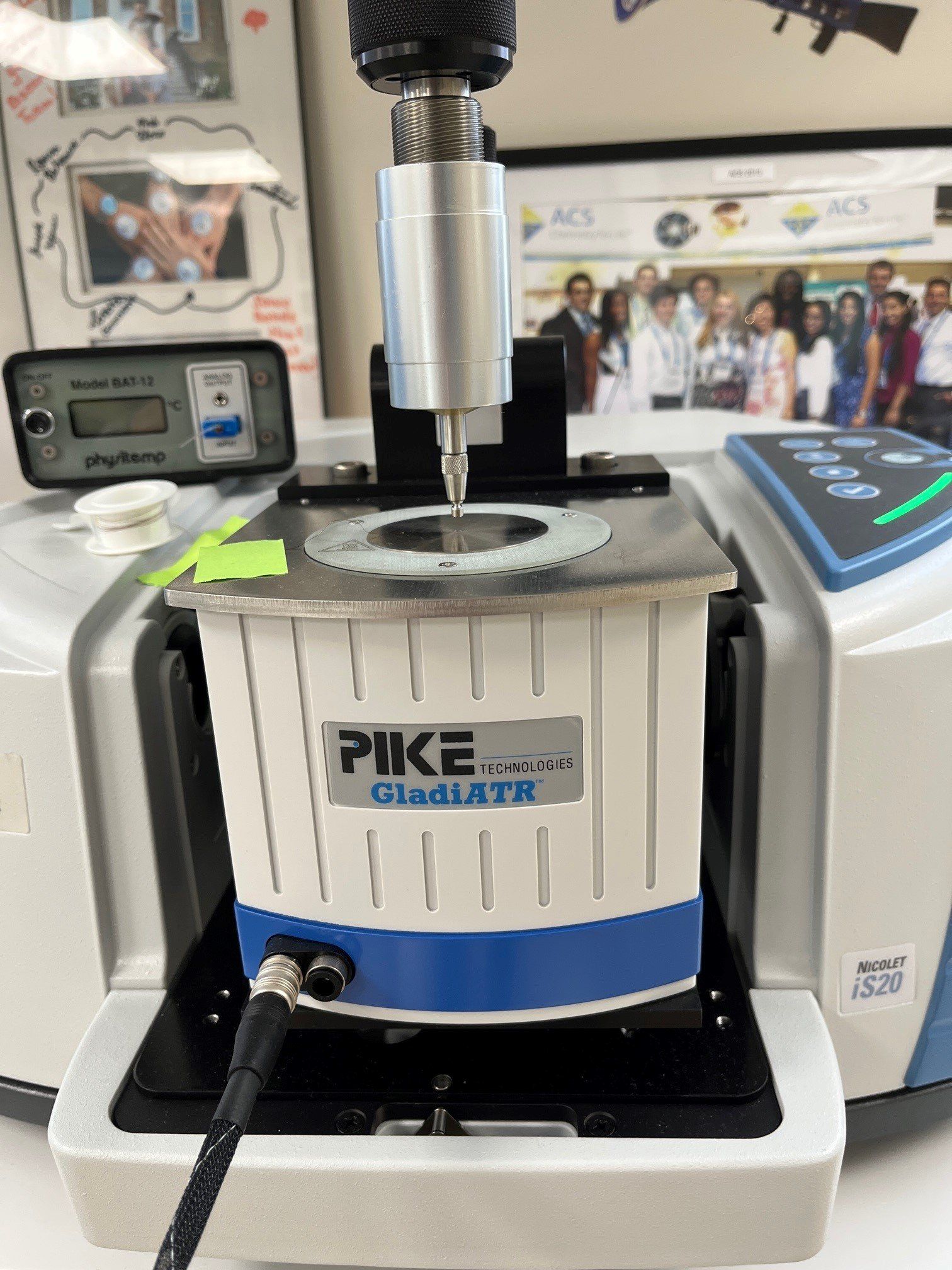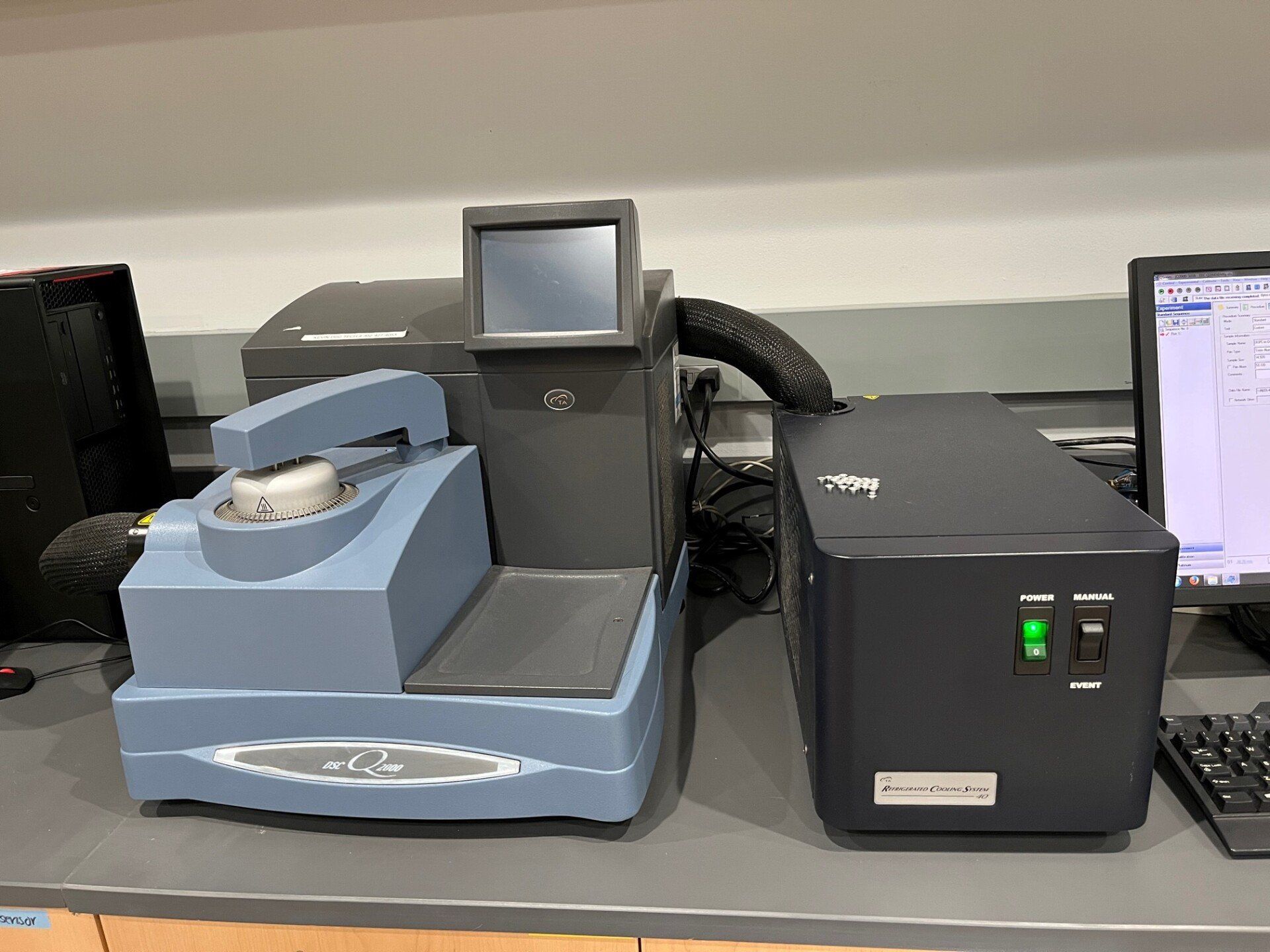Microscopy Laboratory - Instrumentation
Inverted Digital Video Microscope with Micropipet Manipulation
A technique that is central to our research is the use of inverted digital video microscopy with micropipet manipulation, also referred to as micromanipulation. Our system is composed of an experimental station (an inverted microscope with a micromanipulator); data acquisition station (a digital camera/PC interface); distribution system (digital library, images and videos); and display (projection system). Reactions between and within aqueous microdroplets can be visualized and recorded in real-time.
Inverted Confocal Raman Microscope System (XploRA INV from Horiba)
Micropipet Manipulators
Micropipet manipulators provide an ability to create, observe, and manipulate a single isolated cell size droplet in a well-defined and -controlled liquid environment. Manipulation of the microdroplets can be used to modify the interface by moving droplets to different environments, introducing reagents, and modulating a surrounding monolayer/bilayer.
Tensiometry (Rame-Hart Goniometer/Tensiometer)
The study of how surfactants spread at liquid-liquid interfaces can lead to a better understanding of monolayer formation in colloidal systems. One direct measure of this transfer is the change in the interfacial (liquid-gas and liquid-liquid) tension. The interfacial tension of water against a solution of lipid in oil will allow us to determine area per molecule of the lipid at the interface, using the Gibbs adsorption equation, therefore, provide an evidence of interfacial densities. A Rame-Hart Tensiometer is used in conjunction with image analysis software DROPImage for measurement of interfacial tension.
Electrophysiology (Custome-made)
ATR-IR Spectrometer Differential Scanning Calorimeter (DSC, TA 2000)
Attenuated Total Reflectance (ATR)-Infrared (IR) spectroscopy is used to study the structure and organization of lipid membranes and allows to gain an understanding of bioactive molecules and cell membrane interactions.
DSC is a thermodynamic technique that measures the temperatures and heat flows associated with transitions in materials as a function of time and temperature. It allows the determination of the heat exchange associated with lipid phase transitions upon interaction with exogenous molecules with cell membranes.
